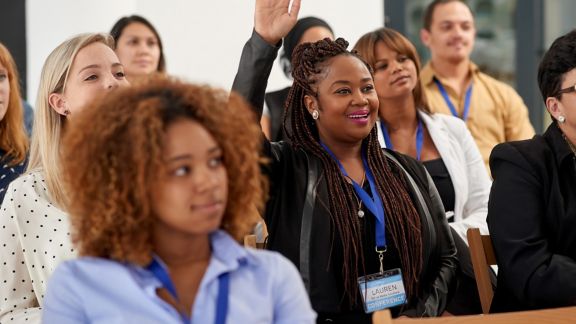From the Classroom to the Lab and Back

From the Classroom to the Lab and Back was a collaboration among researchers, practitioners, and curriculum developers to develop, validate, and disseminate instructional strategies that advance the early math skills of 3-to-5-year-old preschool children, particularly those from low-socioeconomic-status backgrounds. The collaboration was grounded in research demonstrating that early mathematics skills predict later achievement in mathematics. Research also demonstrates that children show marked differences in their mathematical knowledge at the start of school, differences often associated with socioeconomic status. Studies suggest that math-related interactions between adults and young children can substantially enhance the development of children’s mathematical thinking and that children from economically disadvantaged households can gain the most from high-quality early childhood math programming. However, most early childhood classrooms include little, if any, math discussion or instruction.
This project sought to change this state of affairs by clarifying instructional goals for early mathematics development in preschool settings. Together, project researchers, practitioners, and curriculum developers are building instructional strategies for teaching preschoolers fundamental numerical and spatial skills and testing these strategies in the lab and classroom settings. Establishing number and spatial understanding is critical for all later math learning. Number understanding undergoes substantial development in the preschool years, and strong spatial thinking is critical for long-term achievement in mathematics and other STEM (science, technology, engineering, and mathematics) disciplines.
In early numeracy, the project focused on instructional strategies that build young children’s understanding of cardinal numbers (e.g., understanding that the number “three” represents sets of three items), the cardinal principle (i.e., understanding that the last number reached when counting a set represents the size of the whole set), and the successor function (i.e., understanding that for every number, the next number in the count list represents a set that is one larger).
In geometry and spatial thinking, the project developed instructional strategies for teaching children about shape categories and angles and strategies that use technology to build children’s spatial visualization skills.
One way the project gauged student learning was through a mathematics assessment for 3-to-5-year-old preschool children, which was developed in a related project, Getting on Track Early for School Success (GoT). The results of this project were integrated into the GoT formative assessment system to:
- provide teachers with frequent, detailed information about individual children’s progress in acquiring fundamental math concepts and skills
- support teachers in gaining an understanding of: (a) critical mathematics content for young children, (b) how learning within different content areas progresses from ages 3 to 5, and (c) how to use specific instructional strategies and lessons to advance the acquisition of math skills and concepts
Related Tags
Project Leads
-
Marc Hernandez
Associate DirectorProject Director -
Stephen W. Raudenbush
Senior FellowPrincipal Investigator
Project Team
Principal Investigator
- Stephen Raudenbush, EdD, Professor, Department of Sociology and Chairman of the Committee on Education, University of Chicago
Co-Principal Investigators
- Susan C. Levine, PhD, Professor, Departments of Comparative Human Development and Psychology and Chairman of the Committee, University of Chicago
- Susan Goldin-Meadow, PhD, Professor, Departments of Comparative Human Development and Psychology and Chairman of the Committee, University of Chicago
- Debbie Leslie, MAT, Associate Director for Direct Services, Center for Elementary Mathematics and Science Education (CEMSE), University of Chicago
- Liesje Spaepen, PhD, Curriculum Developer, Center for Elementary Mathematics and Science Education (CEMSE), University of Chicago
Team Members
- Dominic Gibson, Doctoral Candidate, Department of Psychology, University of Chicago
- Elizabeth Gunderson, PhD, Assistant Professor, Department of Psychology, Temple University
- Marc Hernandez, PhD, Senior Research Scientist, Academic Research Centers, NORC, University of Chicago
- Raedy Ping, PhD, Postdoctoral Scholar, Spatial Intelligence and Learning Center, Department of Psychology, University of Chicago
- Janet Sorkin, PhD, Senior Mathematics Assessment Development Associate, Committee on Education, University of Chicago








